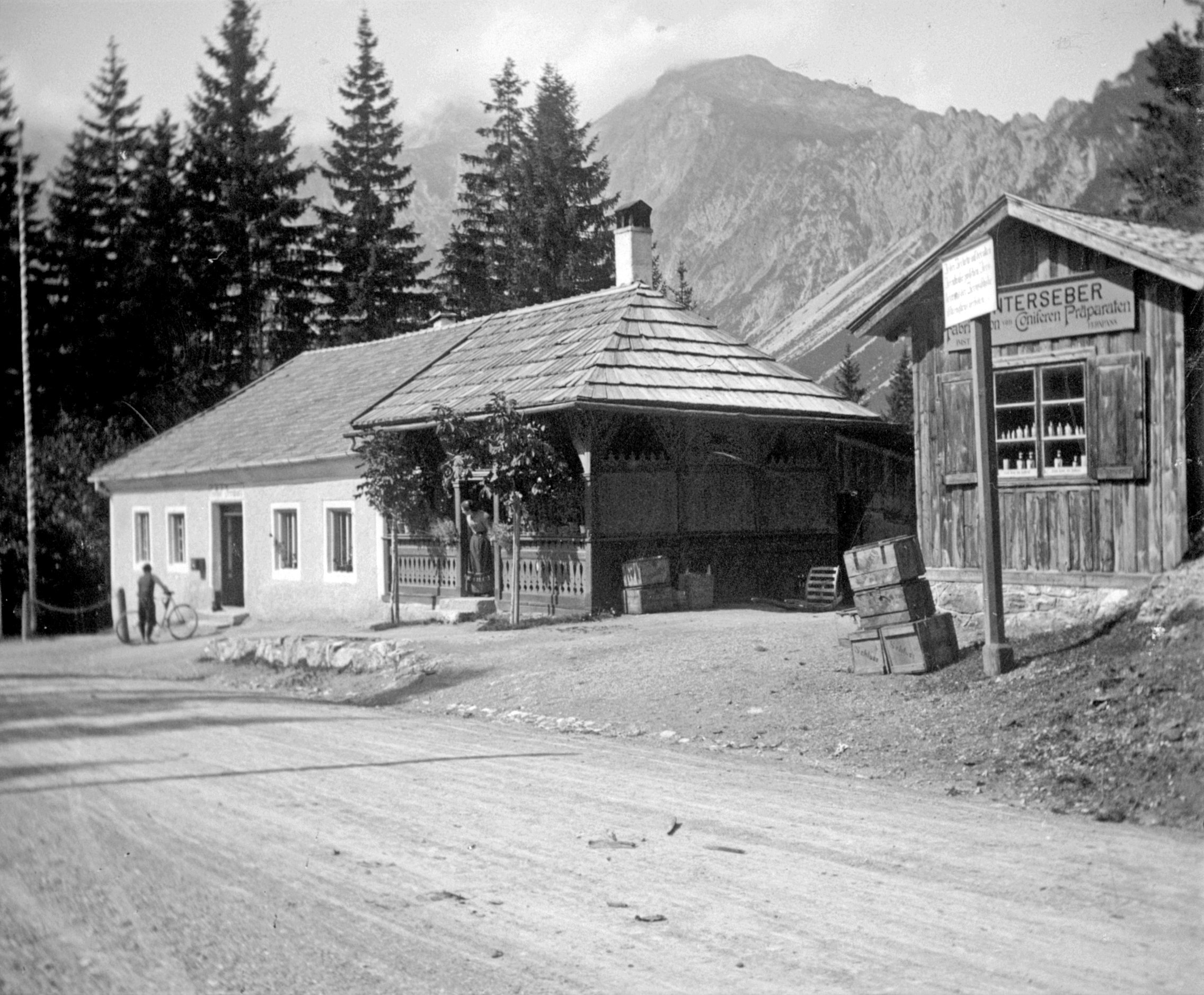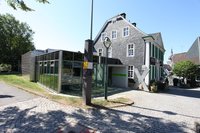Gasthaus Fernpass an der gleichnamigen Passstraße. Ein Mann mit Fahrrad steht vor dem Gasthaus, aus der Holzveranda an der rechten Seite des Gebäudes schaut eine Frau heraus (wohl eine Kellnerin). Rechts neben dem Gasthaus steht eine Verkaufsstelle für Produkte auf Basis von Koniferen (besser bekannt als Latschenkiefer), an dem Holzhaus ist ein Schild mit der Aufschrift "Hinterseber. Fabrikation von Coniferen-Präparaten. Imst. Fernpass" angebracht. Johann Hinterseber betrieb seit 1898 eine Fertigung für Latschenkiefer-Destillate mit Verkaufsstelle am Fernpass. Das Foto entstand auf einer einwöchigen Reise mit der Kutsche von Pontresina über das Vinschgau, Inntal und Fernpass nach München.
en









